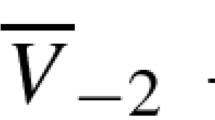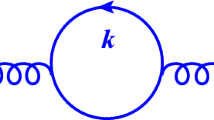Abstract
The symplectic group Sp(n/2) of invariance of flavors of n Majorana states (n is even) does not admit the existence of invariant Majorana masses. Only a specific mass matrix involving diagonal and off-diagonal elements is possible. A mass matrix as a result of spontaneous flavor- and chiral-symmetry breaking may appear here only in the case where the number of flavors is n = 6 and only together with spontaneous R- and L-symmetry violation—that is, parity violation. As a result, three light and three heavy Dirac particles (neutrinos) are present if the seesaw mechanism is operative. Special features of the observed spectrum of light neutrinos—in particular, the fact that two states are far off the third one—can be explained by simple properties of the mass matrices arising in Sp(3). The arrangement of states corresponds to an ordinary mass hierarchy. The mixing angles for physical neutrinos cannot be determined without understanding the mechanisms responsible for the formation of the charged-lepton spectrum and the weak current of Majorana states.
Similar content being viewed by others
References
Particle Data Group, Phys. Lett. B 667,36, 517 (2008).
A. Yu. Smirnov, arXiv: 0810.2668v1 [hep-ph].
R. N. Mohapatra and A. Yu. Smirnov, arXiv: 0603.118v1 [hep-ph].
R. E. Behrends, J. Dreitlein, C. Fronsdal, and W. Lee, Rev. Mod. Phys. 34, 1 (1962).
S. L. Glashow and M. Gell-Mann, Ann. Phys. (N.Y.) 15, 437 (1961).
P. Matthews, The Relativistic Quantum Theory of Elementary Particle Interactions (Univ. of Rochester, New York, 1957; Inostr. Liter., Moscow, 1959).
Y. Nambu and G. Jona-Lasinio, Phys. Rev. 122, 345 (1961); W. A. Bardeen, C. T. Hill, and M. Lindner, Phys. Rev. D 41, 1647 (1990); S. P. Klevansky, Rev. Mod. Phys. 64, 649 (1992).
V. A. Miransky, Nuovo Cimento A 90, 149 (1985); C. N. Leung, S. T. Love, and W. A. Bardeen, Nucl. Phys. B 273, 649 (1986).
J. B. Kogut, E. Dagotto, and A. Kocic, Phys. Rev. Lett. 60, 772 (1988); M. P. Grady, D. K. Sinclair, and J. B. Kogut, Phys. Lett. B 200, 149 (1988); J. B. Kogut and J.-F. Lagae, Nucl. Phys. B (Proc. Suppl.) B42, 681 (1995).
S. Weinberg, Phys. Rev. D 11, 3583 (1975); G.’ t Hooft, Phys. Rev. Lett. 37, 8 (1976); Phys. Rev. D 14, 3432 (1976); E. Witten, Nucl. Phys. B 156, 269 (1979).
Author information
Authors and Affiliations
Additional information
Original Russian Text © I.T. Dyatlov, 2009, published in Yadernaya Fizika, 2009, Vol. 72, No. 12, pp. 2121–2131.
Rights and permissions
About this article
Cite this article
Dyatlov, I.T. Attempt at a gauge-theory-based explanation of the mass spectrum and number of light neutrinos. Phys. Atom. Nuclei 72, 2059–2069 (2009). https://doi.org/10.1134/S1063778809120096
Received:
Accepted:
Published:
Issue Date:
DOI: https://doi.org/10.1134/S1063778809120096




